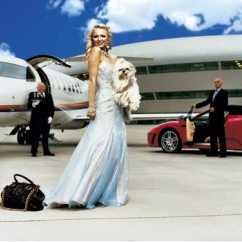Articles and News
10 Key Insights From Bain & Co.’s Latest Luxury Goods Worldwide Monitor December 02, 2015 (0 comments)

New York, NY—The 14th edition of Bain & Co.’s Luxury Goods Worldwide Market Monitor, developed in collaboration with Italy’s Fondazione Altagamma, outlines a gradual slowing in the growth of luxury markets worldwide, owing to weakness in China, Russia, and other emerging markets, while the United States remains strong overall, a leader in many categories of luxury purchases.
Sales of personal luxury goods are expected to grow only 1% worldwide this year, compared with 3% growth last year and 7% growth in 2013. The slowdown is no surprise to analysts: Claudia D’Arpizio, a Bain partner in Milan and lead author of the study, says the deceleration has been happening for several years. Luxury Society lists a number of key takeaways from this year’s study:
1. Luxury cars, luxury hospitality, and fine art stood out as strong category performers, with 8%, 7%, and 6% year-on-year growth, respectively. The United States was particularly responsible for growth in the luxury auto sector and also for ultra-high-end fine art.
2. In the personal luxuries market (leather, fashion, jewelry, beauty, etc.), fluctuating exchange rates pushed growth increases into double digits, but real growth—what’s calculated after exchange rates are adjusted—was a very modest 1% to 2%, say Bain’s findings.
3. Accessories accounted for 30% of sales in the personal luxuries category, followed by apparel at 24%, hard luxury (including jewelry) at 22% and beauty at 20%.
4. Jewelry and shoes led the “hard luxury” subcategory of personal luxury goods. Of those, jewelry was the clear winner—perhaps because of its perception as a safe investment in uncertain times, says Bain. Sales of fine watches weren’t as robust as jewelry, however; it was a perfect storm of Asian softness and a very high Swiss franc.
5. Accessible and aspirational luxury accounted for three-fourths of personal luxury goods sales: accessible luxury took 38% of sales, while aspirational luxury rang in at 36% of personal luxury goods sales. Absolute luxury claimed only one fourth (26%) of the market.
6. Proving that even affluent shoppers love a bargain, more than one-third (35%) of personal luxury goods sales were on markdown in 2015. The good news is that almost two thirds (65%) of the personal luxury goods market sold through at full price.
7. The United States continues to lead the global luxury market, contributing more than one-third (34% of luxury goods sales worldwide. Europe is a close second at 33%, while the Chinese continue to head overseas to make their personal luxury goods purchases.
8. Within Europe, Germany is the leading market. France and Italy performed well in luxury retail. Spain and the U.K. are solid though less buoyant but Switzerland struggled. Swiss watch sales were strong but other luxury sales lagged.
9. Eastern Europe remains weak, though Chinese tourism in Russia is driving some improvement there. In Latin America, Mexico and Brazil lead in luxury spending, and in Asia, Japan leads the region.
10. Online shopping continues to make strong inroads into luxury shopping. In 2015, online channels claimed 7% market share, double that of three years earlier in 2012. Social networks with “buy” buttons are also helping to drive digital sales.
The biggest challenge facing luxury marketers is establishing the right pricing model, says Bain’s report. The growth of both e-commerce and global tourism creates greater price transparency, and brands that have relentlessly spiraled their prices upward in a quest for greater exclusivity are now finding that strategy is backfiring. Consistent and well-balanced international pricing will be crucial for luxury brands to attract and retain increasingly price-conscious luxury consumers looking for international bargains.







